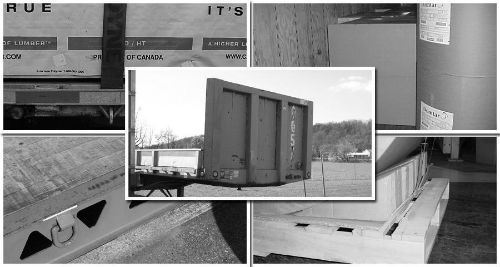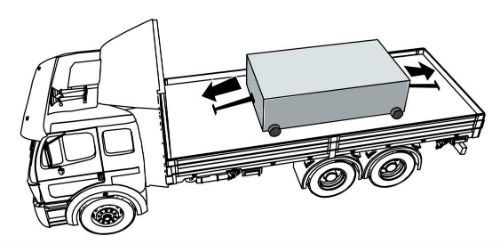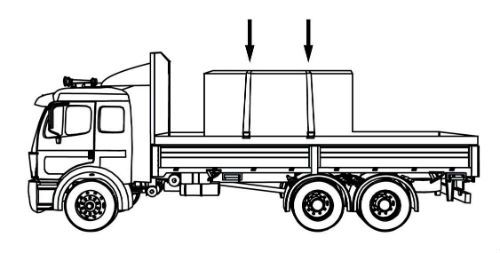Review Questions - Click On The Picture To Begin...

- A rail along the side of a vehicle that protects the side of the vehicle from impacts.
- A vertical barrier across the front of the deck of a vehicle to prevent forward movement of cargo.
- A tapered or wedge-shaped piece used to secure round articles against rolling.
- A structure, device, or another substantial article placed against or around an article to prevent horizontal movement of the article.
Quote From The CDL Manual:
Blocking:
A structure, device, or another substantial article placed against or around an article to prevent horizontal movement of the article.
- 1
- 3
- 0
- 2
Quote From The CDL Manual:
All components of a tiedown must be in proper working order.
- No knots or obvious damage
- No distress
- No weakened parts
- No weakened sections
- it fills a sided vehicle, and every article is in contact with or sufficiently close to a wall or other articles so that it cannot shift or tip if those other articles are also unable to shift or tip.
- It fills a void between articles of cargo and the structure of the vehicle that has sufficient strength to prevent movement of the articles of cargo.
- It is packed in a square box.
- It is loaded on the end of the truck.
Quote From The CDL Manual:
Contained:
Cargo is contained if it fills a sided vehicle, and every article is in contact with or sufficiently close to a wall or other articles so that it cannot shift or tip if those other articles are also unable to shift or tip.
- All of these are valid.
- Blocking and bracing equipment.
- Vehicle structure.
- Securing devices.
Quote From The CDL Manual:
What is a securement system?

A securement system is a securement method that uses one or a combination of the following elements:
- Vehicle Structure.
- Securing Devices.
- Blocking and Bracing Equipment.
- A combination of securing devices which form an assembly that attaches cargo to, or restrains cargo on, a vehicle or trailer, and is attached to anchor point(s).
- A structure, device, or another substantial article placed against or around an article to prevent horizontal movement of the article.
- A rail along the side of a vehicle that protects the side of the vehicle from impacts.
- A strip of material that may be used to unitize articles and is tensioned and clamped or crimped back upon itself. (same as "Strapping")
Quote From The CDL Manual:
Tiedown:
A combination of securing devices which form an assembly that attaches cargo to, or restrains cargo on, a vehicle or trailer, and is attached to anchor point(s).
- 50% forward, 50% rearward, 50% sideways, 80% upwards.
- 80% forward, 50% rearward, 50% sideways, 20% upwards.
- 50% forward, 20% rearward, 50% sideways, 20% upwards.
- 80% forward, 50% rearward, 80% sideways, 20% upwards.
Quote From The CDL Manual:
How strong must the vehicle structure and anchor points be?
All elements of the vehicle structure and anchor points must be strong enough to withstand the forces described on page 7.
- Forward force: 0.8 g (80%)
- Rearward force: 0.5.g (50%)
- Sideways force: 0.5 g (50%)
- Upward force: 0.2 g (20%)
- 29,650 lbs
- 14,825 lbs
- 5,930 lbs
- 30,000 lbs
Quote From The CDL Manual:
How strong must the vehicle structure and anchor points be?
All elements of the vehicle structure and anchor points must be strong enough to withstand the forces described on page 7.
- Forward force: 0.8 g (80%)
- Rearward force: 0.5.g (50%)
- Sideways force: 0.5 g (50%)
- Upward force: 0.2 g (20%)






 Related Cargo Securement Terms That Every Driver Should Know:
Related Cargo Securement Terms That Every Driver Should Know: 



 TT On Facebook
TT On Facebook